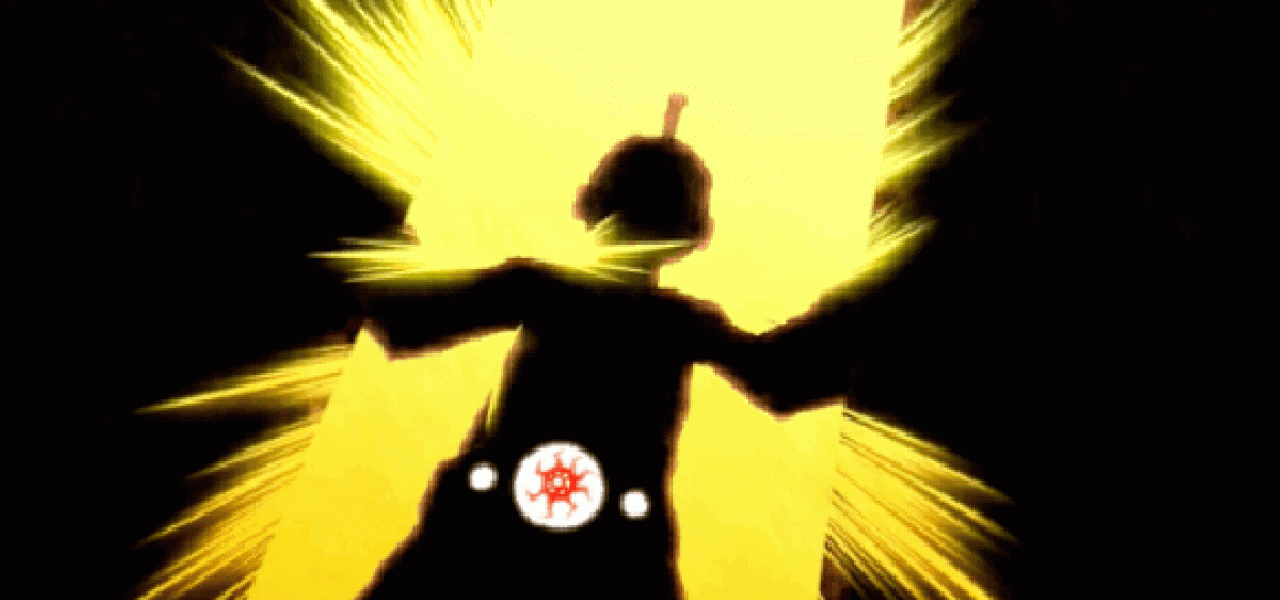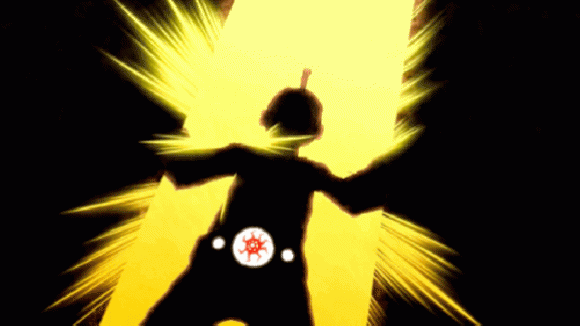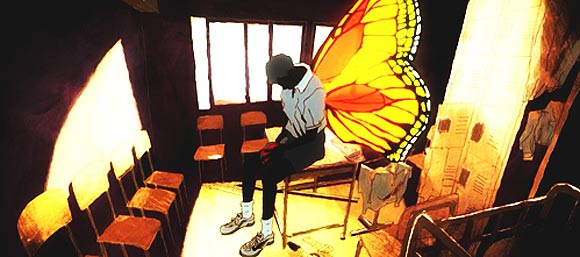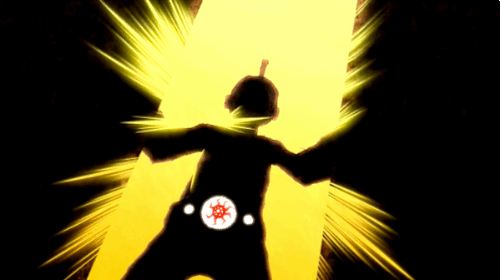

‘Ping Pong’ Recap: ‘Smile is a Robot’

“Let’s Spokon.” – Mr. Koizumi
Determined to unleash Smile’s potential, Coach Koizumi devises a relentless schedule of training that culminates in a death match pitting old veteran versus young hopeful. Smile’s resistance finally cracks under the pressure, and he begins to get serious. Meanwhile, the appearance of a new rival – the tough-looking Ryuichi Kazama – sets the stage for a later showdown.
Masaaki Yuasa productions tend to vary dramatically in terms of visuals and directing style from episode to episode due to the freedom granted episode directors, but this episode was again handled by Yuasa, so it maintains the tone and quality of the first episode. The same was the case in Kemonozume – the first two episodes were handled by Yuasa and hence were comparable in style, but from there on out the show was a stylistic rollercoaster ride. If the pattern remains the same, we’ll see some different staffing and different styles start to come into play in the next episode. But the constraints of the source material will likely keep things more uniform.

In terms of visuals and directing style, we get the same unevenness in the drawings presumable partly borne of short schedule, and the same deft pacing filled with those dizzying multi-perspective cross-cuts. Masaaki Yuasa storyboarded the episode again. The arrow pointing to the broom is a stylistic hallmark of Yuasa dating back at least to Mind Game, and Yuasa’s style comes out particularly in the more freewheeling animation of the winged hero at the beginning. While Yuasa has storyboarded the first couple episodes, the directing has been handled by other individuals. In episode 1 it was Takehiro Kubota. In episode 2 it’s Hideki Ito, who is also the show’s animation director and lead animator.
The first episode set the stage and introduced us to the players. Its followup focuses squarely on Smile’s psychological predicament and breakthrough. On the threshold of adulthood, Smile clings to his solitary, sheltered childhood. Sensitive and lacking social skills, he keeps a low profile to avoid conflict. He liked ping pong when it was a simple outlet devoid of meaning like his LCD handheld game, not a competitive sport. He fears the complicated relationships and competition that signify adulthood.

The episode’s standout visual sequence depicts his predicament metaphorically: A younger Smile has been locked in a locker by bullies, and someone, possibly Peco, comes to free him. However, the hero-like silhouette of the mysterious figure hints that the scene as more than pure reminiscence. It seems to be a blend of reminiscence and metaphor: Like a bullied kid stuck in a locker, awaiting a hero to come save him, Smile has grown used to passively avoiding conflict. His only friend has been Peco, who is presumably the one who let him out of the locker and introduced him to ping pong. He rode along on Peco’s coattails throughout childhood, but to become his own man he has to stop losing on purpose to Peco. He takes this first step by acknowledging that no hero will come, and embracing the robot insult hurled at him by his peers. He becomes no Roomba but an empowered robot who can muster the confidence to defeat his opponent.
The series is obviously being produced on a tight schedule, which makes me willing to overlook the crudeness of a lot of the drawings. This is most obvious from the fact that the opening hasn’t been completed yet, so they’re having to use clips from the episodes. Also, the scene where Smile is cornered by his teammates is a corner-cutting copy from episode 1, but a clever one that makes it seem like a gag about their unimaginatively repetitive bullying. Staff struggling valiantly within short schedules have been the norm in anime, and ad-hoc shortcuts have become stylistic hallmarks. Not all of the animation will work in cases like this, but it’s enjoyable seeing how much they can achieve. I prefer seeing animation that is unpolished but has vitality and personality than animation that is highly polished but lifeless. The style of Yoshinori Kanada, arguably one of the most influential and beloved animators in Japan, grew out of the limitations of TV anime.
For the most part, even the crudest drawings seem stylistically a fit with the indie style of Taiyo Matsumoto’s manga, even if not an assiduous copy. Masaaki Yuasa is one of the few people who could manage to put together a show on such short notice in such a way that the crudeness actually works somewhat with the rough style of the show rather than simply coming across as bad animation. You could sense the same tactic at work in Kemonozume.
I mentioned that the show was part of the ‘spokon’ genre. Coach Koizumi actually uses the word spokon in this episode, making this a self-aware spokon anime. With its artistic flourishes and stylish directing, Masaaki Yuasa’s Ping Pong is closest in spirit to Osamu Dezaki’s 1973 TV show Aim for the Ace!, a spokon landmark about high-school girl’s tennis:
Dezaki was the pioneering auteur in anime, and Aim for the Ace! was notable for heightening the drama with wild color palettes and experimental directing techniques like triple-takes. From the crude means of industrial animation, he created a unique visual ethos. Yuasa doesn’t overtly imitate Dezaki in any way. He merely follows his example of creating a highly artistic show about adolescent sports with very limited means, largely through clever directing rather than lavish animation. Fast-paced cross-cuts and rapid-fire animation alternate with slow pans, creating a thrilling ride that slows down and speeds up and switches perspectives constantly to get you into the mindset and eyes of the players.
Like episode 1, this episode culminated in a match that featured some nice animation and idiosyncratic drawings. According to director Hideki Ito, this scene was animated by Izumi Murakami and Tatsuro Kawano. The section right before where Smile is practicing with the coach and falls also had some nice movement, but I’m not sure who drew it.
Character designer Nobutake Ito was present with some animation, I’m guessing of the first scene in the locker. Masaaki Yuasa regular Eunyoung Choi reportedly headed the unique Flash animation in the imaginary robot scene, which was produced by a team of foreign animators.
Aya Suzuki is an animator with a short but remarkable CV: she has worked on Sylvain Chomet’s The Illusionist, Satoshi Kon’s The Dream Robot, Mamoru Hosoda’s Wolf Children and Hayao Miyazaki’s The Wind Rises. Betsujin Shishido is obviously a pen name. Pen names are used surprisingly regularly in anime. Hiromi Hata is a talented animator who worked on Kaiba as well as a bonus episode of the French show Wakfu directed by Choi Eunyoung.
Ping Pong Episode 2: Smile is a Robot
| Storyboard: Script: Series Structure: |
Masaaki Yuasa | |
| Episode Director: | Hideki Ito | |
| Animation Director: | Hideki Ito | |
| Key Animation: | Hideki Ito | Aya Suzuki |
| Tomomi Kawazuma | Kanchi Suzuki | |
| Hiromi Hata | Izumi Murakami | |
| Noriyuki Imaoka | Betsujin Shishido | |
| Tatsuro Kawano | Nobutake Ito | |
| Eun Young Choi | ||
| Flash Animation: | Science SARU | |
| Juan Manuel Laguna | Abel Gongora | |
| Thomas Hudson |

.png)